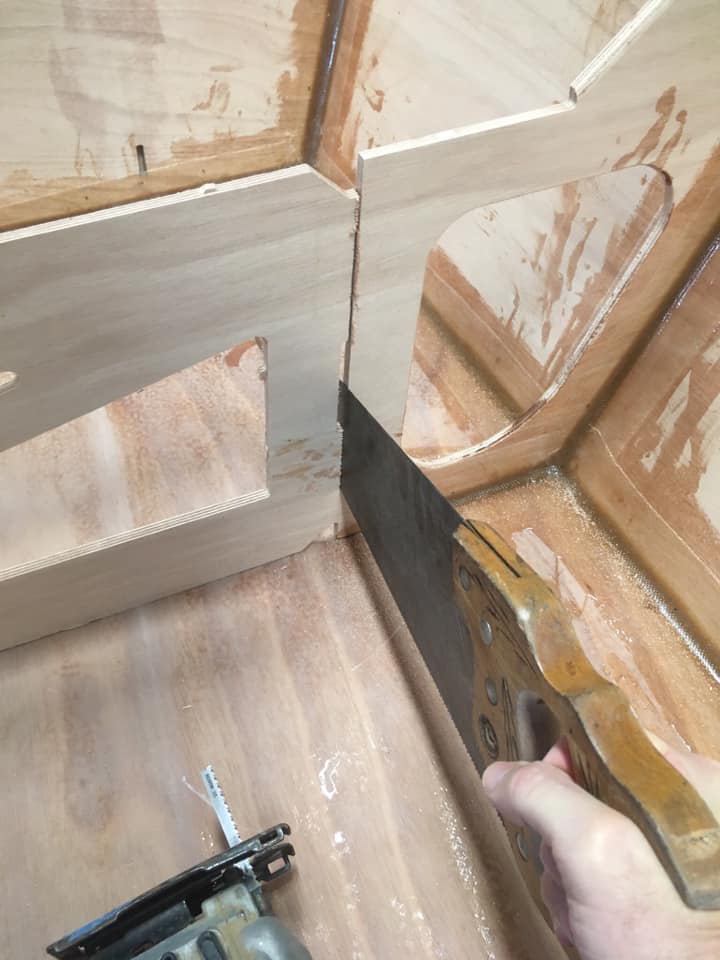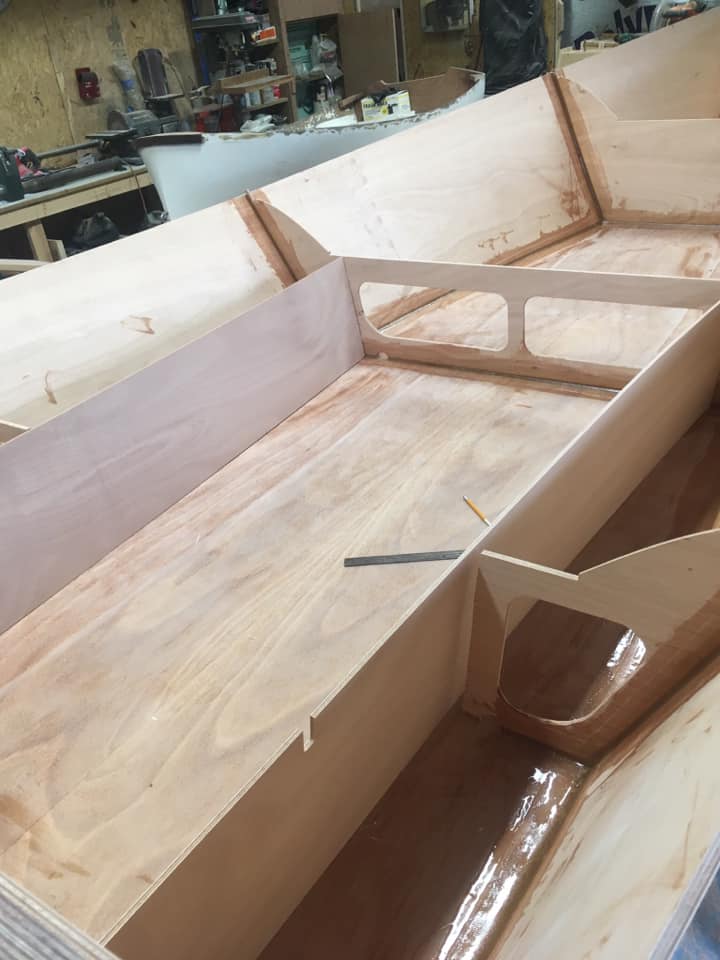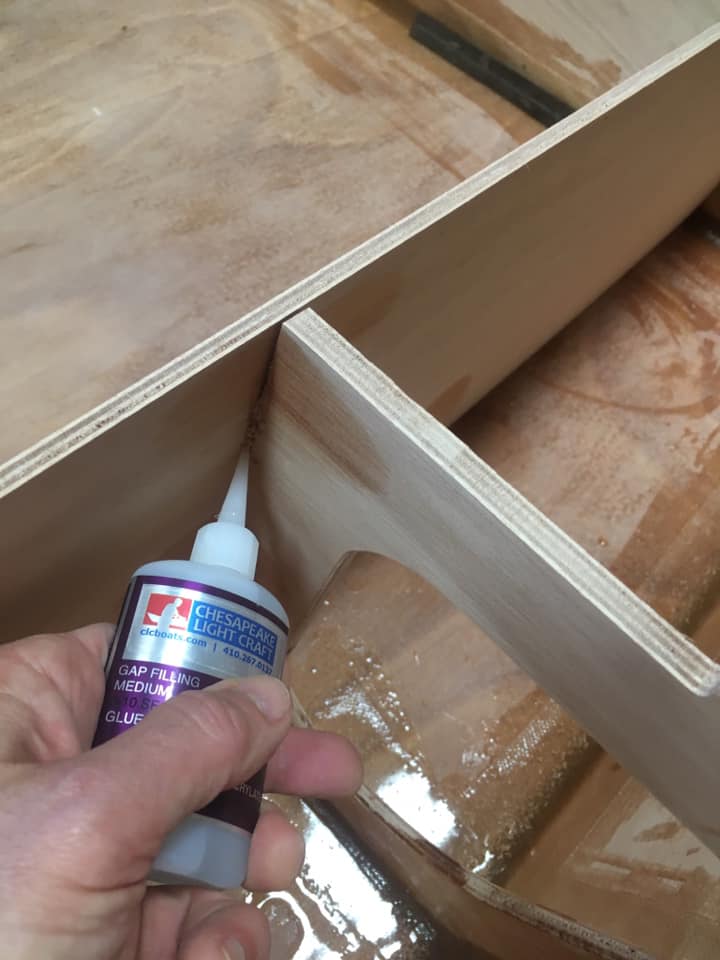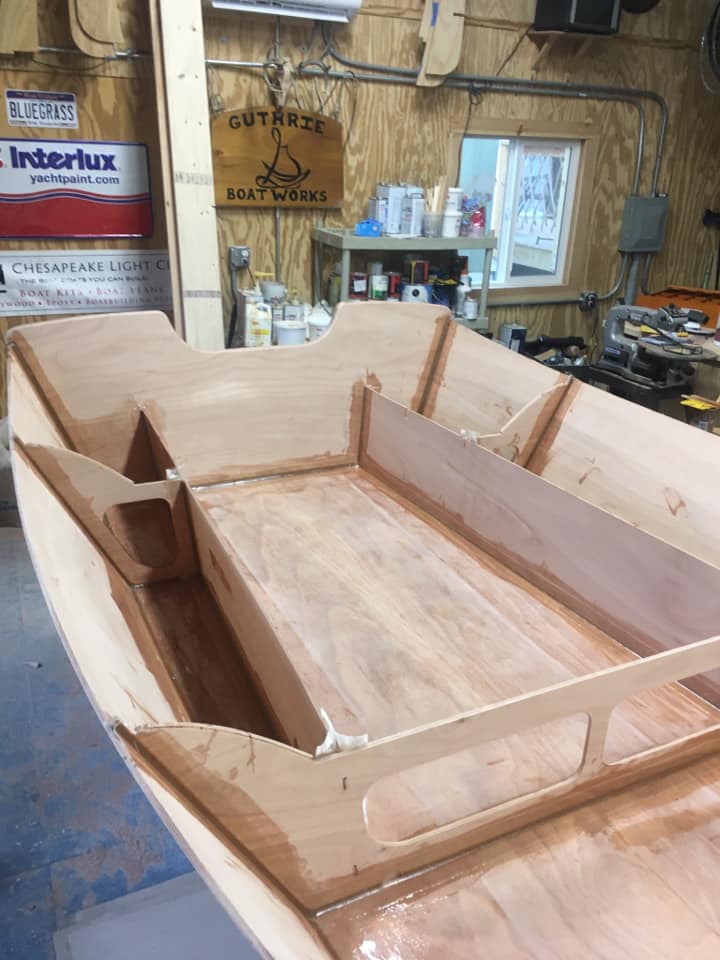Day 7, Peeler Skiff build for Chesapeake light craft.
Today I made a small amount of progress by cutting out the center portion of the aft bulkhead and installing the tank sides. These will create a water tight compartment as well as support for the side seats.
This was a simple job that took a little more than two hours to complete. The cutting of the bulkhead was done with a combination of jigsaw and handsaw, however if I were to do it over, I would have left the jigsaw in its case. The handsaw cut very quickly, and was easier to cut a straight line with than the jigsaw.

After starting the cuts with a jigsaw, I switched to the handsaw, which did a better job.
The tank side panels have little tenons on each end that correspond to mortices in the center bulkhead and the transom. I thinned the tenons on every side with my Shinto rasp to make inserting them easy. The panel needs to be bent to get the tenons into their mortises, but botH sides fit perfectly.

The tank sides fit perfectly! I thinned the tenons on all sides to avoid the struggle of inserting them.
Instead of “tack welding“ with epoxy, as instructed by the manual, I decided to tack with CA glue so that I could fillet and tape immediately after. It only took 5 or 6 tacks of CA glue on each panel to hold them securely in place for filleting. The glue dries in about 15 seconds when sprayed with the accelerator, making this a very quick job. I put all of the “tacks” of CA glue inside of the closed compartment to avoid any stains created on the plywood from being visible later. Whenever you are using CA glue on a boat, this needs to be a consideration. If left on the surface of a panel that will be finished bright, the CA glue will create a little spot of wood that is considerably lighter than the wood around it. This happens because the CA glue doesn’t penetrate as deeply into the fibers of the wood as epoxy, making it slightly lighter than the richer “wetter” wood around it. Use CA glue in hidden places whenever possible, or be sure to sand all traces of the glue from any surfaces that will be finished bright. This kit doesn’t come with CA glue, as some do. It is a real time saver, and I recommend it whenever building a boat. It is amazing how often it comes in handy.

A few tacks of CA glue and it was ready for fillets and tape.
Lastly, I filleted all of the seams using the 1” fillet tool. Every single fillet got fiberglass tape as well.

Finished fillets and tape. This boat uses miles of fiberglass tape!

 return to section:
return to section: 










